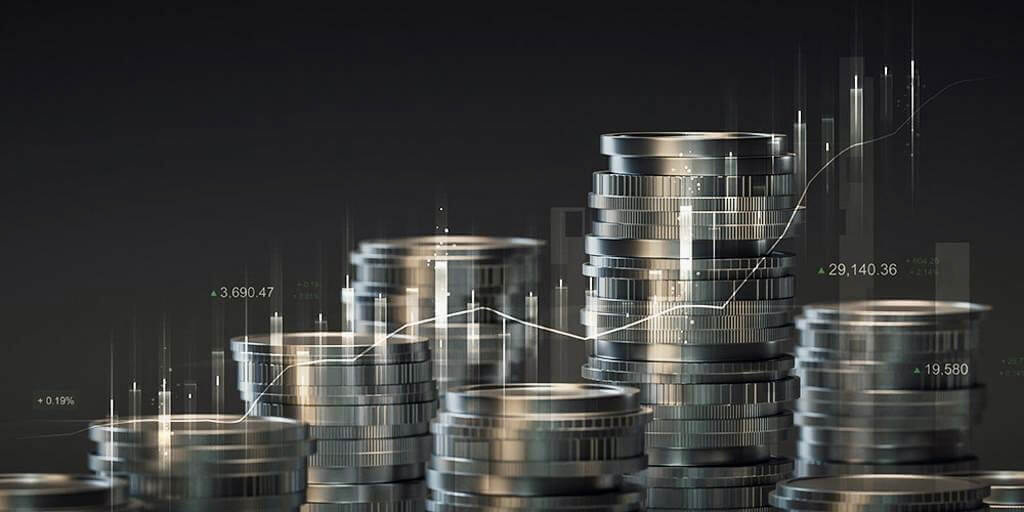|
| For a Better Tunghai |

It’s been headed down for decades, but the most important price in the global economy is changing direction. Bloomberg Originals explains why.
數十年來,資金成本一直呈下降趨勢,但全球經濟中最重要的價格正在改變方向。彭博原創解釋原因。
What’s the most important price in the global economy? The price of oil? The price of semiconductors? The price of a Big Mac? More important than any of Big Mac? More important than any of these is the price of money. For more than three decades it was falling, but now it’s set to rise. In the mini- documentary The Rising Cost of Money, Bloomberg Originals explains why this is happening-and what it means for you.
全球經濟中最重要的價格是什麼?是石油價格嗎?是半導體價格嗎?還是巨無霸漢堡的價格?比任何巨無霸漢堡還重要?比這些都更重要的是資金的價格。三十多年來,資金的價格一直在下降,但現在它即將上升。在迷你紀錄片《資金成本的上升》中,彭博原創解釋為什麼會發生這種情況,以及這對你意味著什麼。
Ask most people how the price of money is set, and they’ll say via interest rates determined by central banks like the US Federal Reserve. In fact, there’s a deeper logic at work. Fundamentally, the price of money (like the price of anything else) reflects the balance of supply and reflects the balance of supply and demand. A higher supply of savings pushes rates down. More investment demand pushes them up.
問大多數人資金的價格是如何確定的,他們可能會說是透過像美聯儲這樣的中央銀行制定的利率。實際上,有一種更深層次的邏輯在發揮作用。從根本上來說,資金的價格(就像任何其他東西的價格一樣)反映了供需的平衡。儲蓄供應增加會推動利率下降,而更多的投資需求則會推動利率上升。
For the economics wonks, the price of money that balances saving and investment while keeping inflation stable has another name-the “natural rate of interest.” For more than three decades, this rate was trending down. By Bloomberg Economics’ estimates, and adjusting for inflation, the natural rate of interest for 10-year US government bonds fell from a little more than 5% in 1980 to a little less than 2% over the past decade.
對於經濟學迷來說,平衡儲蓄和投資、同時保持通脹穩定的資金價格還有另一個名稱,那就是「自然利率」。在三十多年的時間裡,這個利率一直呈下降趨勢。根據彭博經濟學的估算,並考慮通脹因素,過去十年中,美國政府10年期債券的自然利率從1980年的略高於5%下降到不到2%。
In The Rising Cost of Money, we explain what drove the rate lower, what’s about to reverse its decline and what that means for everything from home prices to the stock market and the sustainability of US government debt.
在《資金成本的上升》中,我們解釋了是什麼驅使了利率的下降,即將扭轉其下降趨勢的原因,以及這對從房價到股市以及美國政府債務的可持續性等方面意味著什麼。
以下是《資金成本的上升》一文中的摘要:
|
1. 經濟成長緩慢,降低投資需求; 2. 人口老化,儲蓄增加,提升資金的供給; 3. 中國經濟快速發展,累積大量多餘的現金投入 (購買) 美國政府公債,進而壓低公債殖利率。 |
|
1. 戰後新生兒潮逐漸從職場退休,減少儲蓄和政府稅收; 2. 中國經濟放緩,降低多餘資金的累積; 加上美中關係惡化,渡洋到美國投資的金額中止; 3. 還有美國政府不斷的舉債,也會使市場資金緊張而推升利息。 |
彭博測算上述三股力量會推升自然利率回升至少1/3。 如果加上通膨,則到2030年自然利率可能高達4.5 ~ 5%。
再者,全球對抗氣候變遷 (Climate change),要達到凈零排放得花30兆美金的投資,加上AI浪潮帶來的創新機會,企業會爭相投入 (軍備競賽),而帶動對資金的急遽需求。 第三,如果各國政府繼續他們的舉債步伐速度,10年期公債殖利率到2030年時可能 (Could) 達到6%。
利息的上升,意味著從房屋貸款 (mortgage) 到政府支出 (美國財政部是最大輸家) 都將大幅上升; 資產價格也會因而回跌。
上文譯自Bloomberg Intelligence (彭博社) 2024年元月12日專文。
鄭清和,1-16,2024
● 讀後留言使用指南
近期迴響